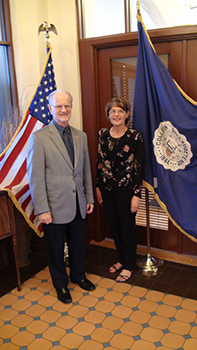Researcher in Otorhinolaryngology advocates education in deafness and hearing loss

Dr Magteld Smith
|
The annual International Day of Persons with Disabilities falls on 3 December. Statistics reveal that 7.5% of the South African population suffer from some form of physical disability.
More than 17 million people in South Africa are dealing with depression, substance abuse, anxiety, bipolar disorder, and schizophrenia - illnesses that round out the top five mental health diagnoses, according to the Mental Health Federation of South Africa. The South African Federation for Mental Health is the umbrella body for 17 mental health societies and numerous member organisations throughout the country.
On disability, world-renowned author Helen Keller, who was both deaf and blind, once said that the problems that come with being deaf are deeper and more complex than those of blindness, and is a much worse misfortune. For it means the loss of the most vital stimulus - the sound of the voice that brings language, sets thoughts astir, and keeps us in the intellectual company of man.
According to Dr Magteld Smith, lecturer and researcher in the Department of Otorhinolaryngology at the University of the Free State (UFS), hearing loss of any degree at any age can have far-reaching psychological and sociological implications which affect an individual’s day-to-day functioning, and might prevent him or her from reaching their full potential. She says that even though advancements have been made in aiding deaf persons, there’s still considerable room for improvement. She’s making it her mission to bring about changing the stigmatisation around deafness, and the different choices of rehabilitation.
Dr Smith was born with bilateral (both ears) severe hearing loss, and became profoundly deaf, receiving a cochlear implant in 2008. Not letting this hinder her quality of life, she matriculated in 1985 at a School for the Deaf in Worcester. Today she is the only deaf medical-social researcher in South Africa.
Her research focuses on all aspects of deafness and hearing loss. Through first-hand experience, she knows that a loss of hearing can be traumatic as it requires adjustments in many areas of life which affect a person’s entire development. However, she has not let her deafness become a stumbling block. She has become the first deaf South African to obtain two Master’s degrees and a PhD, together with various other achievements.
Her work is aimed at informing and educating people in the medical profession, parents with children, and persons with various degrees and types of hearing loss about the complexities of deafness and hearing loss. She believes that, with the technological advancements that have been made in the world, deaf people can become self-sufficient and independent world changers with much to contribute to humanity.